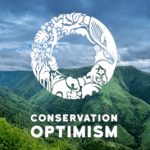Wondering what went right this week in the conservation world? We’ve got you covered with our Conservation Optimism Round-Up! Each week we are collating stories of optimism from around the globe so that you never miss your dose of Monday Motivation.
1. Critically endangered antelope saiga makes comeback
“According to the first aerial survey in two years, the number of saiga in their Kazakhstan heartland has risen from 334,000 to 842,000.”
Great news from @ACBK_Kazakhstan: #saiga numbers rose dramatically in last 2 yrs thanks to #conservation efforts by #Kazakh govt & ACBK supported by @FaunaFloraInt @SaigaCA @BonnConvention #conservationoptimism https://t.co/i5ur0fktZX
— EJ Milner-Gulland (@EJMilnerGulland) July 4, 2021
2. This adorable mouse was considered extinct for over 100 years — until we found it hiding in plain sight
“But today, we bring some good news: one rodent species, Gould’s mouse (Pseudomys gouldii), is set to be crossed off Australia’s extinct species list. This means the number of Australia’s extinct mammals will drop from 34 to 33.”
This mouse was considered extinct for over 100 years — until found hiding in plain sight. #conservationoptimism #nolongerextinct https://t.co/PkySqLjdOG via @ConversationEDU
— Tony Lynam (@RedPandaBKK) June 28, 2021
3. Breakthrough allows scientists to determine the age of endangered native fish using DNA
” However a non-lethal DNA test developed by the CSIRO enables researchers to determine fish age for three iconic and threatened Australian freshwater species: the Australian lungfish, the Murray cod and the Mary River cod. ”
Determining a fish's age has historically been tricky and, er, fatal for the fish.
— Shoal (@Shoal_Org) June 29, 2021
Now, a breakthrough has enabled scientists to determine the age of endangered fish using DNA 👇👇https://t.co/NtPaR8ze13 #conservationoptimism
4. The population of endangered Bengal Tigers in India’s Manas National Park increased with 16 new cubs this year
“A rise of 16 tigers, which is over 50 per cent, in a year is indeed a remarkable achievement and the increased sightings indicate that conservation efforts are working in the park”
5. Good news for the Iberian lynx
“In the early 2000s, these species were at the brink of extinction, but conservation efforts in a Spanish region of Extremadura are paying off”
✨#ConservationOptimism news for the #IberianLynx ✨
— ipbes (@IPBES) June 28, 2021
In the early 2000s, these species were at the brink of extinction, but conservation efforts in a Spanish region of Extremadura are paying off 🇪🇸
via @dw_environment pic.twitter.com/aEDV7fX2Y9
6. The state of South Australia has designated a new National Park
“South Australia has a new national park with Nilpena Ediacara National Park officially proclaimed – it will replace the existing Ediacara Conservation Park and add nearly 60,000 hectares of extra protected land. “
7. Golden Paintbrush Is Latest Endangered Species Act Success Story
“There were only 10 known populations of the golden paintbrush when it was listed under the Endangered Species Act in 1997. Now, thanks to protection and replanting efforts, at least 48 sites of golden paintbrush have been documented.”
#ConservationOptimism https://t.co/zYT4tCJWgC
— SCB (@Society4ConBio) June 29, 2021
Have a story to share for our weekly round-up? Use #ConservationOptimism on Twitter, Facebook, LinkedIn and Instagram!


